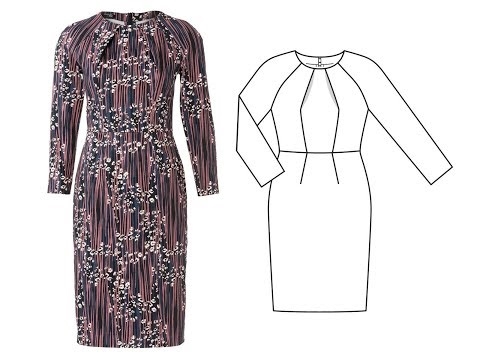Alpaca wool is one of the most valuable in the world! Perhaps no other type of wool is ready to compete with it.
Alpacas are pets that the Peruvian Indians tamed 6000 years ago. In those days, alpaca wool served as currency. The special value of the hair of these cute animals was given by a unique natural color.
Later, the alpaca had a strong competitor - sheep, but not by the quality of the coat, but only by the popularity of the animal species.
Today, alpacas are bred in the Andes (highlands of South America), where almost three million individuals live. Most of these animals inhabit Peru. This country is the largest supplier of alpaca wool in the world.
What is cashmere: features of luxury woolen fabric
In nature, there are two breeds of alpaca:
Suri

► more rare Suri with long hair in the form of braids (the fabric of their wool is of the greatest value)
Coat from suri alpaca

Photo: Max Mara
Wakaya

► and the most common form Huacaya (Wakaya) with wool similar to soft plush.
Animals are bred in favorable conditions in order to obtain wool, by shearing, which is carried out once every two years. About 2–3 kg of wool are sheared from one adult animal.
First, the raw materials are sorted by hand, cleaned of sand, blades of grass and thorns. And only then does the spinning process begin, after which the finished yarn is subjected to additional processing (cutting) in order to finally remove the residue of contamination.

Alpaca wool is practically not stained, since this is completely unnecessary. Nature itself took care of color diversity, giving us 24 beautiful natural shades.
Alpaca wool is valued primarily because it possesses all the properties of sheep’s wool and is several times lighter in weight and several times warmer. In addition, its fibers are much thinner and stronger, which provides alpaca wool with increased lightness and durability.
Hit of the season: tweed fabrics
Types and properties of alpaca wool
► Royal alpaca with a fiber diameter of 19 microns
► Baby alpaca with a fiber diameter of 22.5 microns is considered the highest quality
► Very soft alpaca with a fiber diameter of 25.5 microns
► Adult alpaca with a fiber diameter of 32 microns
The alpaca fabric does not stretch or wrinkle, is practically waterproof and has increased resistance to pollution. The latter property is provided by the natural feature of alpaca animals.

Alpaca wool is the color of golden rye and fir. Photo: @ tkan.ita
Alpaca wool fabric with a long smooth pile and a light satin sheen, its incredible tactile properties are difficult to convey in words. Touching the "alpaca", it is impossible to deny yourself the pleasure, stroke the delicate pile of this luxurious fabric with your palm. No other wool fabric compares with the highest quality alpaca wool.
Products made of alpaca wool are very warm, soft, comfortable and do not cause allergic reactions in contact with the human body. The fabric does not roll or fall off during wear.
Alpaca Products

► Blankets, rugs, bedspreads
► Carpets
► Scarves, stoles
► Hats

► Socks
► Sweaters
► Coat
Bright representatives in the classic version:

Photo: Max Mara
- Special offer
- 1
- 2
- 3
- 4
Oversize Models

Photo: Max Mara
- Best-seller
- Special offer

- 1
- 2
- 3
- 4
- Special offer

- 1
- 2
- 3
- 4
► Jackets, jackets
Luxurious Alpaca Wool Bomber Jacket

Photo: @tvibo_s
- Special offer

- 1
- 2
- 3
- 4
► And even sundresses
Warm sundress on a silk lining

Photo: @tvibo_s
- Special offer

- 1
- 2
- 3
- 4
What is Loden: how to cut, sew and care for the fabric
How to care for alpaca wool products
Use lavender, tobacco or cedar to store and preserve from moths. Forget about naphthalene, alpaca does not tolerate it.
Products and yarn made of alpaca wool can be washed, but only in cold water using special liquid detergents. After washing, it is better not to squeeze things from alpaca wool, but let them drain. And then dry straightened on a flat surface.
Iron products made from alpaca wool very carefully through a damp cloth.
The alpaca fabric has a pile, so iron it with extreme care. Fold the canvas in half edge to edge, to avoid skewing, face inward and iron it from the wrong side, without steam and only on a soft substrate so that the pile does not jam. Be sure to first try ironing in a small area so as not to spoil the fabric.
How to decorate cashmere coat
To restore the appearance of the pile on fabric made of alpaca wool, use a soft sponge or brush - “comb” the pile with delicate movements.
Alpaca products can be dry cleaned.
The only drawback that alpaca wool fabric has is the high price. But working with this unique material is a great pleasure, and the result that will be obtained after the completion of the sewing project with alpaca will exceed all your expectations.
Photo: pixabay, Julia Dekanova (hat)



